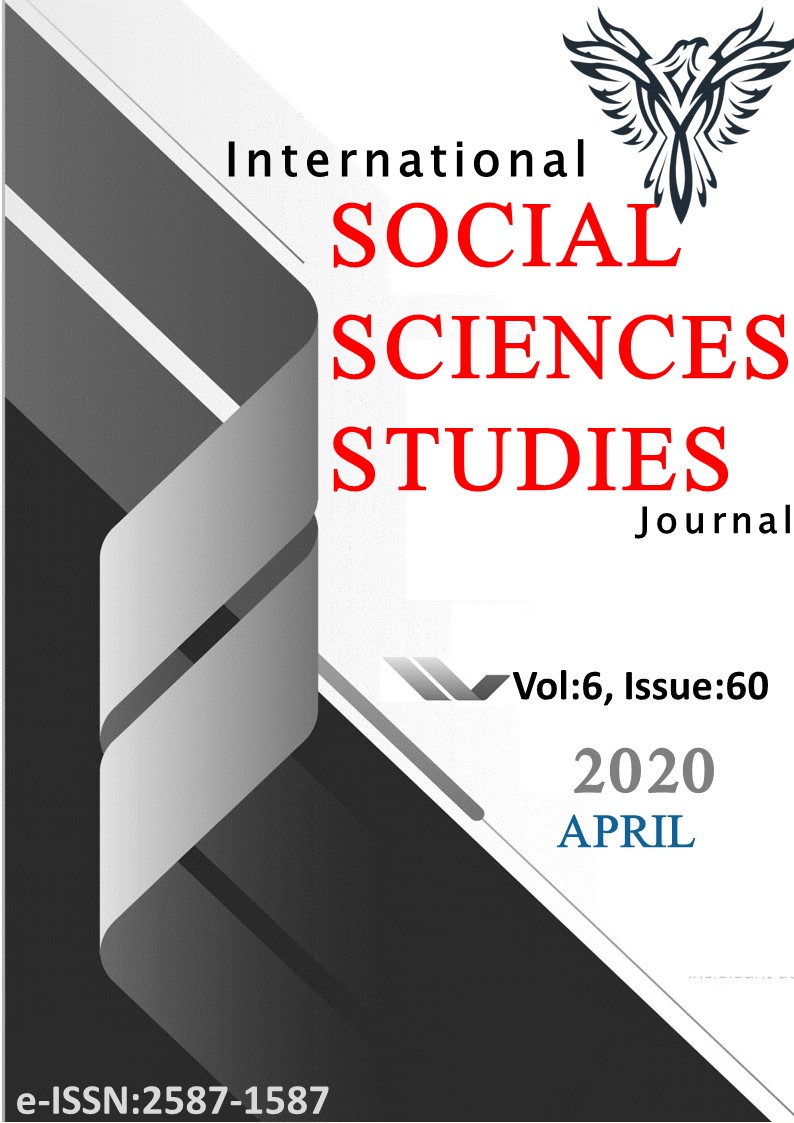Baz Metallerin Dünya Siyasi Tarihindeki Önemli Olaylarla Bağlantısının Retrospektif Literatür Taraması Yöntemi İle Araştırılması
Author :
Abstract
Bakır, kurşun ve çinko elementlerinin jeokimyasal özellikleri birbirine yakındır. Çalışmada n-gram analizleri dönem olarak 1750-2008 yılları arasını kapsayacak şekilde yapılmıştır. N-gram analizi ile baz metallerin literatürde kullanım oranındaki zamana bağlı değişim ve bunu etkileyen olayların ilişkisi incelenmiştir. Analiz sonucunda Sanayi Devrimi’nin ortaya çıktığı 1760’lı yıllarda anahtar kavramların literatürdeki kullanım sıklığının zirve yaptığı görülmüştür. Seviye yüksekliği, sektördeki talebin arzdan yüksek olmasıyla izah edilmektedir. Arz/talep dengesinin bulunduğu 1800-1840 yılları arasında bir durağanlık söz konusudur. Bu da madencilik pazarında aktörlerin azlığı ile açıklanabilir. Pazarda sanayi ihtiyaçlarına bağlı olarak talebin artması ile 1840’lardan 1920’lere kadar artan bir trend söz konusudur. 1929 Ekonomik Krizi’nin başlarında n-gram analizi sonucu elde edilen grafikte bir dip noktası görülmektedir. Bu tarihten sonra ise 1940’lara kadar süren bir yükseliş trendi gözlenmektedir. Çin’in Dünya ticaret piyasasına güçlü bir şekilde girişi ile 1960’a kadar piyasanın çeşitliliği ve rekabetin artışı söz konusudur. Bu durum grafikte bir yükselme trendini göstermektedir. Baz metallerin n-gram analizinde ilgili grafik incelendiğinde sosyal/siyasal/ekonomik gelişmelerle aralarında anlamlı bir ilişki bulunduğu görülmüştür.
Keywords
Abstract
In this study, n-gram analyzes of copper, lead and zinc elements have been carried out because of their coexistence due to the proximity of their geochemical properties and as a result of this, they have to be operated together and their usage areas are related to each other. Within the scope of the study, n-gram analyzes were carried out on the basis of both individual elements and using the base metal keyword to cover the years 1750-2008. Smoothing factor was taken as 3 in N-gram analysis. By using n-gram analysis, time-dependent changes in the usage rate of base metals in the literature and the relationship were investigated. When the data obtained from n-gram analysis on base metals are evaluated together; In the 1760s, when the Industrial Revolution emerged, the frequency of the use of key concepts peaked. Between 1800 and 1840, when there was a supply / demand balance, there was stagnation due to the lack of actors in the mining market of the elements. There is an increasing trend in the market from the 1840s to the 1920s with the increasing demand from Germany, Spain and the United States, and increasing demand due to industrial needs. At the beginning of the 1929 Economic Crisis, a bottom point can be seen in the graph obtained as a result of the n-gram analysis. After this date, an upward trend continued until the 1940s. With China's expansion until 1960, the diversity of the market and the increase in competition show an upward trend, with a period of downward trend after 1970s. When social / political events and developments were analyzed together with n-gram analysis, a significant relationship was found between them.
Keywords
- Çiftçi, A., Ural, M.N., & Vural, A. (2020). “Baz Metallerin Dünya Siyasi Tarihindeki Önemli Olaylarla Bağlantısının Retrospektif
- 60; pp:1453-1451 BAZ METALLERİN DÜNYA SİYASİ TARİHİNDEKİ ÖNEMLİ OLAYLARLA BAĞLANTISININ RETROSPEKTİF LİTERATÜR TARAMASI YÖNTEMİ İLE ARAŞTIRILMASI Investigation Of The Connection Of Base Metals With Important Events In World Political History By Retrospective Literature Screening Method Doç. Dr. Ali ÇİFTÇİ Gümüşhane Üniversitesi, İİBF-Siyaset Bilimi ve Kamu Yönetimi Bölümü, GÜMÜŞHANE/TÜRKİYE ORCID ID: https://orcid.org/0000-0002-1273-4867 Dr. Öğretim Üyesi M. Nuri URAL Gümüşhane Üniversitesi, Yazılım Mühendisliği Bölümü, GÜMÜŞHANE/TÜRKİYE ORCID ID: https://orcid.org/0000-0001-7011-401X Doç. Dr. Alaaddin VURAL Gümüşhane Üniversitesi, Jeoloji Mühendisliği Bölümü, GÜMÜŞHANE/ TÜRKİYE ORCID ID: https://orcid.org/0000-0002-0446-828X ÖZET Bakır, kurşun ve çinko elementlerinin jeokimyasal özellikleri birbirine yakındır. Çalışmada n-gram analizleri dönem olarak 1750-2008 yılları arasını kapsayacak şekilde yapılmıştır. Ngram analizi ile baz metallerin literatürde kullanım oranındaki zamana bağlı değişim ve bunu etkileyen olayların ilişkisi incelenmiştir. Analiz sonucunda Sanayi Devrimi’nin ortaya çıktığı 1760’lı yıllarda anahtar kavramların literatürdeki kullanım sıklığının zirve yaptığı görülmüştür. Seviye yüksekliği, sektördeki talebin arzdan yüksek olmasıyla izah edilmektedir. Arz/talep dengesinin bulunduğu 1800-1840 yılları arasında bir durağanlık söz konusudur. Bu da madencilik pazarında aktörlerin azlığı ile açıklanabilir. Pazarda sanayi ihtiyaçlarına bağlı olarak talebin artması ile 1840’lardan 1920’lere kadar artan bir trend söz konusudur. 1929 Ekonomik Krizi’nin başlarında n-gram analizi sonucu elde edilen grafikte bir dip noktası görülmektedir. Bu tarihten sonra ise 1940’lara kadar süren bir yükseliş trendi gözlenmektedir. Çin’in Dünya ticaret piyasasına güçlü bir şekilde girişi ile 1960’a kadar piyasanın çeşitliliği ve rekabetin artışı söz konusudur. Bu durum grafikte bir yükselme trendini göstermektedir. Baz metallerin n-gram analizinde ilgili grafik incelendiğinde sosyal/siyasal/ekonomik gelişmelerle aralarında anlamlı bir ilişki bulunduğu görülmüştür. Anahtar Kelimeler: N-gram Analizi, Baz Metaller, Bakır, Kurşun, Çinko, Dünya Siyaseti





